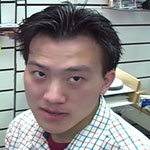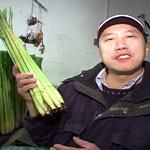2007年VOA标准英语-Business Increasing for Largest Refugee Group i(在线收听)
By Deborah Block
St. Paul, Minnesota
23 April 2007
The Midwest U.S. state of Minnesota is home to the largest Hmong community outside Asia. They originally came from Laos as refugees after the Vietnam War. At least half of Minnesota's 60,000 Hmong live in St. Paul, the state's capital and second-largest city. The only indoor Hmong shopping center in the area sells many items that remind the Hmong of home. VOA's Deborah Block has the story from St. Paul.
The International Market Place is a vibrant shopping center with a wide variety of goods and services, ranging from food to jewelry to a hair salon. Nou Vang owns the market along with her husband and operates a food booth. She says the shopping center is a place where Hmong people can enjoy themselves.
"They can make friends in here. They can meet friends in here. And that's why a lot of people come here and they can see a lot of business around here too. So they can get food. They can get anything they want to."
The market also has a store that sews traditional Hmong clothes. Nou's husband, Toua Xiong, says one piece of clothing is worn to attract women. "Walking with the noise I'm a man of money. So girls come on. That's how I got my wife. It makes me look a lot more handsome."
Many in Minnesota's Hmong community arrived in the late 1970s and 80s after being sponsored by local humanitarian and religious groups. They were mostly poor, uneducated farmers from Laos who had backed the U.S. during the Vietnam War and had fled to Thailand.
 |
| Pheng Yang |
"Hmong people usually like an outside flea market, because in Thailand the streets were filled with markets and I think this is a good idea of what it is like back there," he says.
There are more than 150 vendors at the market. They say the shopping center helps them to make a modest living. Some do not speak English well and lack skills to get other jobs. Most vendors work long hours, seven days a week.
 |
| Neng Lee sells lemon grass |
During the warmer months in Minnesota, he rents a plot of land from a farmer to grow some vegetables. "When I lived in my country (Laos) my parents took me to the farm every day. So that's why I like to do the same thing my parents did."
Du Yang sells typical Hmong kitchen knives. He says business has been good because he has regular Hmong customers. “In this shopping mall, you can expose your product to more people because people travel to Minnesota every weekend from throughout the USA because they have relatives here."
Some customers visit a traditional tea bar where free hot drinks are handed out. The idea is that if you like the tea, you may buy some to take home. Customer Zao Her says many Hmong believe tea helps improve some health problems. "This tea is pretty good for people who have high blood pressure and for diabetes and something like that."
Today, there are approximately 400 Hmong-owned businesses in the St. Paul area. Business owner Bao Vang says Hmong business is continuing to grow. She says she is living the American dream."Who would have thought an illiterate 10-year-old girl who came to America in 1980, who couldn't read or write, who couldn't communicate, could be somebody like me who owns multiple businesses?"
She says many Hmong are enterprising people who like having their own business. She says having a business is a big achievement since so many of them came to the U.S. with so little.